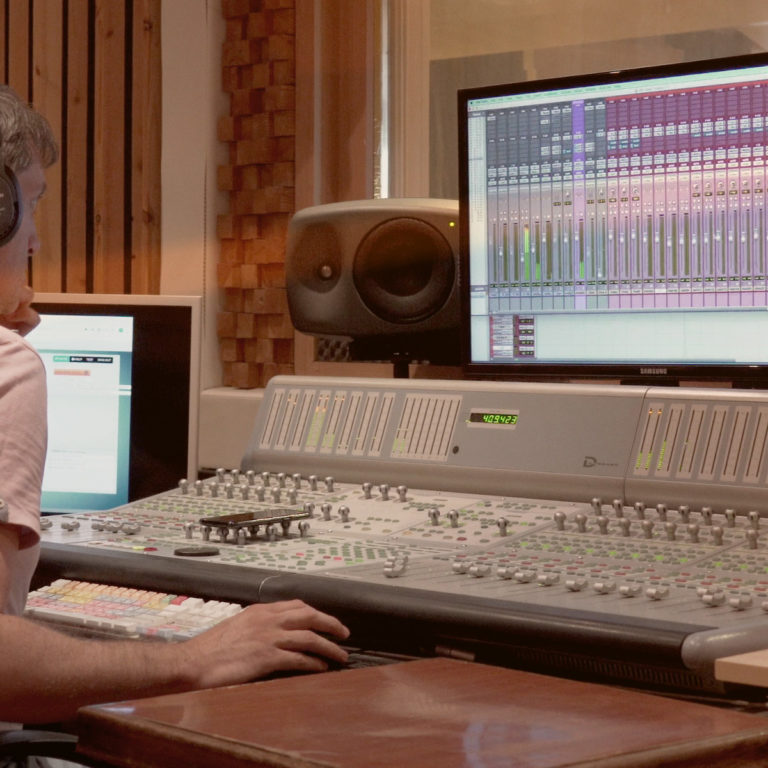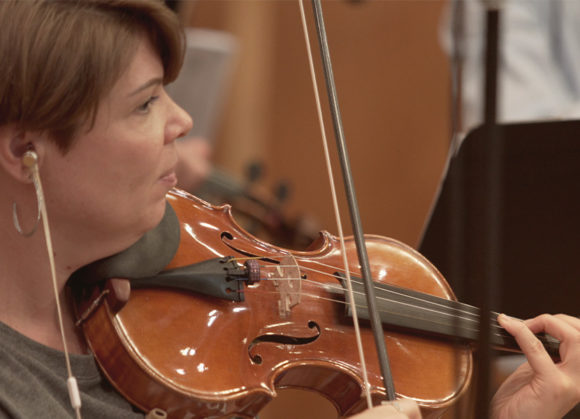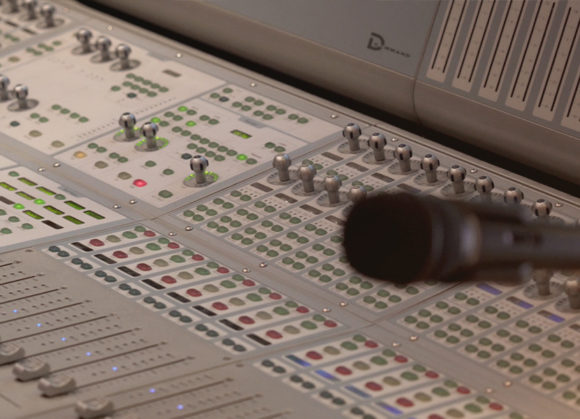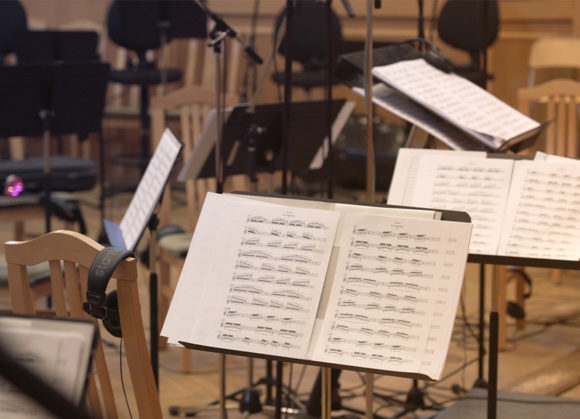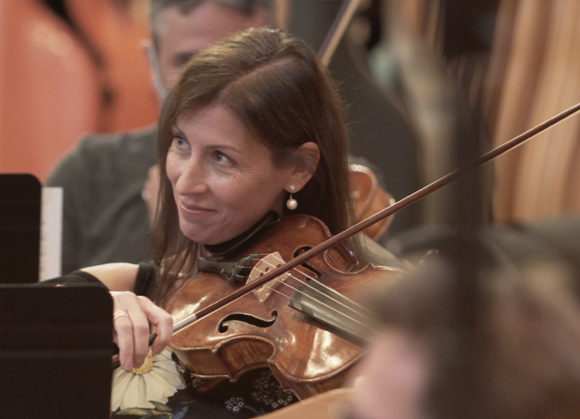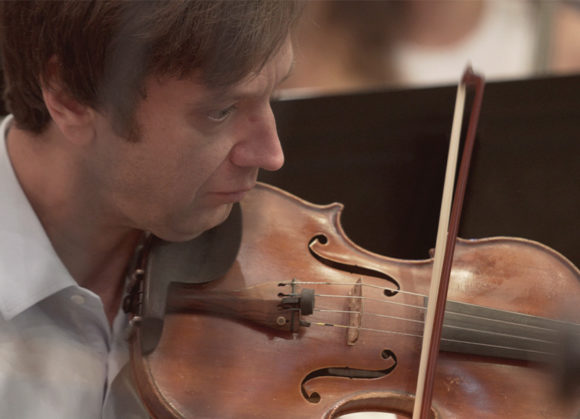Almost a decade ago, the original ACTION STRINGS – a collaboration between NI and Dynamedion – began a new era of orchestral phrase sampling. Almost overnight, the libraries real recorded performances became the driving string rhythms behind countless cinematic scores and other genre-bending productions.
So, when the time came to launch its successor, ACTION STRINGS 2, we reached out to Sonuscore, the latest project from Dynamedion’s founders, including composer Tilman Sillescu. To make the most of KONTAKT 6’s capabilities, the engine had to be entirely rebuilt and all new motifs & single articulations sampled. But that’s just the beginning of the story, as Tilman explains…
What inspired you to create Action Strings 2?
Action Strings was a great success and over the past few years the Sonuscore team had lots of ideas about how to improve the concept. When Kontakt 6 opened up some new possibilities for complex features we knew the time was right to work with Native Instruments and take the sequel to the next level. Action Strings 2 is basically a complete reinvention of the original approach, with an innovative workflow and lots of exciting new features.
You’ve learnt a lot in the last few years?
Certainly. We’ve been honing some of these ideas with the scripting of our other instruments: Action Strikes, Emotive Strings, Mallet Flux and The Orchestra. In fact, The Orchestra was developed with a new type of engine that uses highly intelligent interlocking arpeggiators. All of this knowledge has been incorporated into Action Strings 2 in various ways. For example, the completely new Melody Creator where you can assign a precisely defined melody to a sequence of notes.
So lots of improvements?
There are so many advances over the first version that it’s difficult to know where to start. First and foremost, I’m totally blown away by how composers will be able to build their own phrases; there’s virtually unlimited flexibility now! We didn’t record 2-bar phrases this time, but a mix of single articulations and live elements like legato motifs, runs and falls. These are the exact type of elements that only sound realistic when performed live and in context. These ‘Live Modules’ can now be mixed completely freely by the user with staccatos or other single articulations so every musician can create their own bespoke phrases. Of course, there are lots of presets too and I especially like the chromatic themes. In addition, we’ve purposefully created some more typical compositional building blocks for everyday scoring. However, you don’t have to rely solely on the themes and presets as it’s easy to create something great yourself. It’s a fantastic toolbox for any composer.
There are also multi-sampled single articulations too?
That’s right. Just like the original Action Strings there are 4 phrases on individual keyswitches, but on top of that we also have six different single articulations on additional keyswitches. That means you can switch back and forth between phrases and free-playing. So it’s now much easier to create complete action cues using tremolo, staccato, marcato, trills and more.
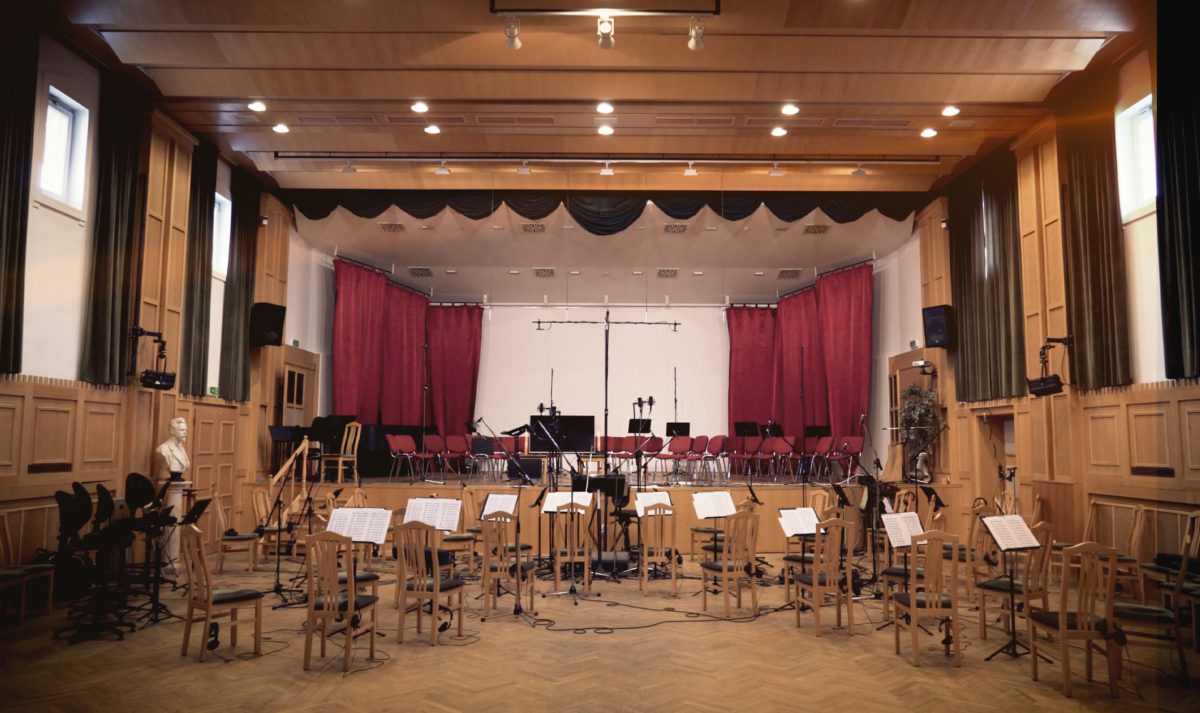
What about the sound itself?
The sound and mixing possibilities have been vastly upgraded, with all new recording sessions and mic positions. It was clear from the start of the project that we wanted to achieve an epic Hollywood scoring timbre. We recorded the strings in Budapest because the musicians are insanely good at performing in that style, having that wide Hollywood sound, but still being able to play tightly. The room we used sounds wonderful and not too reverberant (it was important that the phrases sound defined). My personal favorite position is the Tree mic setup, which has exactly the broad brush sound that I know and love from movie soundtracks. I know it’s a matter of taste and every composer has their own needs, so with our 4 mic positions we have a mix that will suit almost everyone. In addition to the close mics we also have a spot mic position that you can add to the sound to give a more intimate feel. Adding reverb to the spot mic also sounds very cool, immediate yet spatial. Because all of the mics can be mixed and balanced by the user this allows for different kinds of spaces to be reproduced. Action Strings 2 is easy to incorporate into your existing templates with libraries from other developers and create a cohesive mix.
Did you have to do much editing in post-production?
For us it’s extremely important to get the sound as perfect as possible during the recording sessions. We want a natural sound with as little processing as possible. Fortunately, we didn’t have to use any destructive editing at all. It was vital to get the levelling right, which is responsible for a good flow whilst playing. We also spent lots of time setting accurate start points for the singles and modules so that you can hear bow touches, but with the accents sitting perfectly in the grid.
What kind of phrases and motifs can people expect to hear?
Our preparations for the sessions were meticulous: We thought carefully about what kind of modules to record and analysed string passages from so many movie scores. We ended up with countless pages of notation for the musicians as the individual elements had to be played in a variety of pitches and volumes, so that the resulting sound is organic when scripted in Kontakt. It was a really exhausting job for the musicians to record only single notes, modules and runs for several days. But they were very motivated and did a fantastic job. In post production we had a herculean task to edit the recordings. We needed all individual parts to be 100% coordinated. Our team really deserves a few beers here as it was an intense job to edit the modules in terms of volume and start points so that the users can play the instrument really smoothly.
Can you explain the scripting behind the realistic flow of the Live Modules?
This aspect kept us busy for a long time because we really wanted to give the user all possible freedom to combine all of the elements together, without sacrificing realistic playback. We built a compensation script for this, in which the starting points of the articulations and the modules already begin a few milliseconds before the beat, so that the notes did not have to be artificially cut at the beginning. There are lots of calculations behind the scenes, figuring out the best way to play the bow strokes but still keep everything tightly in time. This helps the overall playback of the phrases sound extremely smooth and realistic.

The expansive orchestration features are similar to what you achieved with The Orchestra and Mallet Flux. How does this functionality help?
As composers, we have some pretty hard deadlines to meet and any help comes in handy as long as it doesn’t rob us of our artistic freedom. We often find ourselves wanting to compose a piece, but at the beginning we can be a bit at a loss as to what to start with. Especially when it comes to extremely complex arrangements or big orchestrations, it’s sometimes a crushing feeling to begin to write something so big with a single clarinet staccato! Do you know what I mean? That’s where our products help: You can browse a few presets, get inspired by different ideas, and even play something that already feels a little bit like music already. The important thing is how you use these features. There are some people who just want to press down a single key and make a complete piece of music from a prefabricated phrase. Of course, that’s really fun, but you can also dive much deeper, learn to tweak the parameters to your own personal taste and create completely individual stuff. It’s important to us to offer both ways of working as neither is more legitimate than the other.
What new features have you employed from Kontakt 6?
MIDI export has been added to Action Strings 2. We are particularly proud of this aspect of the instrument and that users can easily export all the modules, including the live runs and falls – that was a lot of detailed work to program. All phrases can be easily recorded and later copied to your own DAW via drag & drop. It means that you can change the recorded material later and adjust it in detail to your own liking. Furthermore, it’s possible to transfer the musical material to other libraries and use completely different sounds, or even layer the strings. This basically means that you can extend the phrases of Action Strings 2 into entire compositions.
How will musicians find Action Strings 2 useful?
We have many working composers on our team, and all of our products stem from a very concrete need to be able to write great film and game music without too much friction. We originally thought that action and trailer music would be the obvious genres for the instrument, but we quickly noticed that our strings were popping up in more modern and electronic tracks. The sounds totally fit with modern beats. I can’t really say why, but it just rocks and is a lot of fun to use these string motifs in modern tracks.
Users can also share phrases with one another. What was the thinking behind that?
I honestly have no clue if that need exists, so it’s more of a fun offer to the community. We just thought the concept was pretty cool and we wanted to make it possible for people to share their musical ideas at the very least. I like the idea that there’s a thriving Action Strings community that can inspire one another.
How have you found the reception to Action Strings 2?
So far we’re really happy because the composing community (and also the reviewers) have really recognised the strengths of Action Strings 2. We’ve received such a lot of positive feedback so that makes the extreme amount of work behind the scenes totally worthwhile. At the end of the day, we’re just glad that people really seem to love it!
Visit our online shop for more audio demos and all the details about the new ACTION STRINGS 2.








